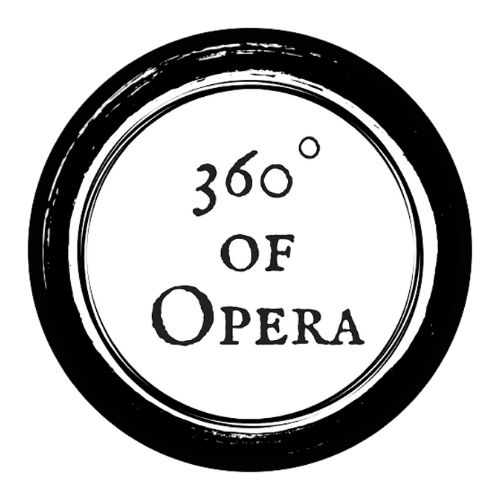Little Match Girl Passion: Holiday Ritual in the Crypt
Far from the familiar strains of Messiah and carols, David Lang’s Pulitzer-winning the little match girl passion offers something intimate yet profound: a meditation on suffering, hope, and grace that transforms Hans Christian Andersen’s haunting tale into a contemporary choral masterpiece. From December 4-6, the vocal ensemble Ekmeles returns to Death of Classical to perform this soul-stirring work in six evening concerts, where the centuries-old burial vault of the Church of the Intercession itself becomes part of the storytelling.
Led by director Jeffrey Gavett, Ekmeles has earned international acclaim for their extraordinary precision and fearless exploration of contemporary vocal music, including works that venture beyond traditional Western tuning. As the first American recipients of the Ernst von Siemens Music Foundation’s Ensemble Prize, they bring both technical virtuosity and deep emotional understanding to Lang’s score, paired with William Byrd’s Renaissance masterpiece “Agnus Dei.” In advance of their performances, we had the great pleasure of speaking with Gavett.
1 / How did the ensemble come together originally?
I founded the group in 2010, wanting an outlet that combined my background in ensemble singing with my passion for contemporary music. At the time, New York City had a thriving contemporary and experimental music scene, but there was relatively little vocal music, especially unaccompanied. I brought in colleagues I knew from both ensemble and contemporary music worlds.
2 / Could you introduce the members of Ekmeles performing?
Charlotte Mundy is our soprano. She is a tremendous advocate for contemporary works, in Ekmeles and her ensemble TAK, and as a soloist and composer. Our mezzo soprano Elisa Sutherland pairs her expertise in contemporary works with a passion for early music in her work with Alkemie, a medieval ensemble of singer/instrumentalists. Tenor Tomás Cruz has a background in jazz, experimental music, and pop music, and recently performed with Meredith Monk at the Park Avenue Armory. Steven Hrycelak, our bass, is a stalwart of early music performance around the country, having sung much of the complete works of Ockeghem with Blue Heron, and Monteverdi operas with Artek, Opera Omnia, and Pegasus Early Music. I am conducting this performance — I most often sing and conduct from within Ekmeles’s ensemble of six, but have stepped out front of the group for this work for fewer voices.
3 / For those new to your work, could you explain what drew you to specialize in contemporary vocal music and particularly microtonal works?
When I was a student at Westminster Choir College, studying vocal performance, I was initially working towards a traditional operatic career. I learned repertoire fast, but always bristled at the idea that I should listen to old recordings to see how I should sing it. I started to feel like there wasn’t a place for me in traditional works, if copying an old recording was the best I could do. Wouldn’t a singer closer to the time and culture of the work’s composition and premiere have a better chance of understanding and serving it? I followed that logic and decided to work instead towards performing music of my own time and place.
My particular focus on microtonal works also came from a question raised in my undergraduate education. While giving pitches for a choir, rather than the accompanist playing everyone’s notes on the piano, a guest conductor used a tuning fork as a reference, and sang the tonic, because it would be “more in tune.” I was fascinated by what that implied — if the piano isn’t in tune, what does being in tune mean, and how can we know? It started me on a journey of learning about the acoustical basis of musical intervals, and eventually led me to our work in just intonation. As an artistic project, a lot of what Ekmeles does is ask the question “what does it mean to be in tune?”
4 / Last year’s performance in the Crypt established what’s becoming a new holiday tradition. What elements of the space particularly resonate with this piece’s themes of isolation and transcendence?
The crypt at Church of the Intercession isn’t just a room with a fabulous acoustic, it’s a burial vault. To perform in the crypt immediately implies a communion with the dead, and foreshadows the trajectory of the little match girl’s tragic story. As a seasonal tradition it ties in with the shortened days and cold nights of winter, the darkest days and emotions before the return of the sun, longer days, spring, and rebirth.
5 / The program includes Byrd’s “Agnus Dei” from the Mass for Four Voices. What led to pairing this Renaissance work with Lang’s contemporary piece?
The Byrd was chosen to connect thematically with Lang’s work. the little match girl passion takes the form of a Passion Play, or narrative of the suffering and death of Jesus, but substitutes the little match girl as the central figure. The “Agnus Dei,” or “Lamb of God” text from the mass implores Jesus, who takes away our sins, to have mercy on us and grant us peace. This short mass movement will be an echo from the past, lightly framing Lang’s work with context.
Another interesting note is that Byrd’s composition of a Catholic mass setting following the English Reformation was prohibited, and would have only been sung in small clandestine Mass celebrations in private households. It is music thus suited for the intimate audience that the crypt can hold.
6 / In your experience performing this work, have you noticed any particular moments that consistently affect audiences most strongly, and has this influenced how you approach those sections?
“the little match girl passion” is a crushingly sad work, but it builds in intensity gradually throughout. The silence following the last movement is the moment where the full impact of it can be felt, and we always hold it as long as we can.
-written by Chloe Yang


